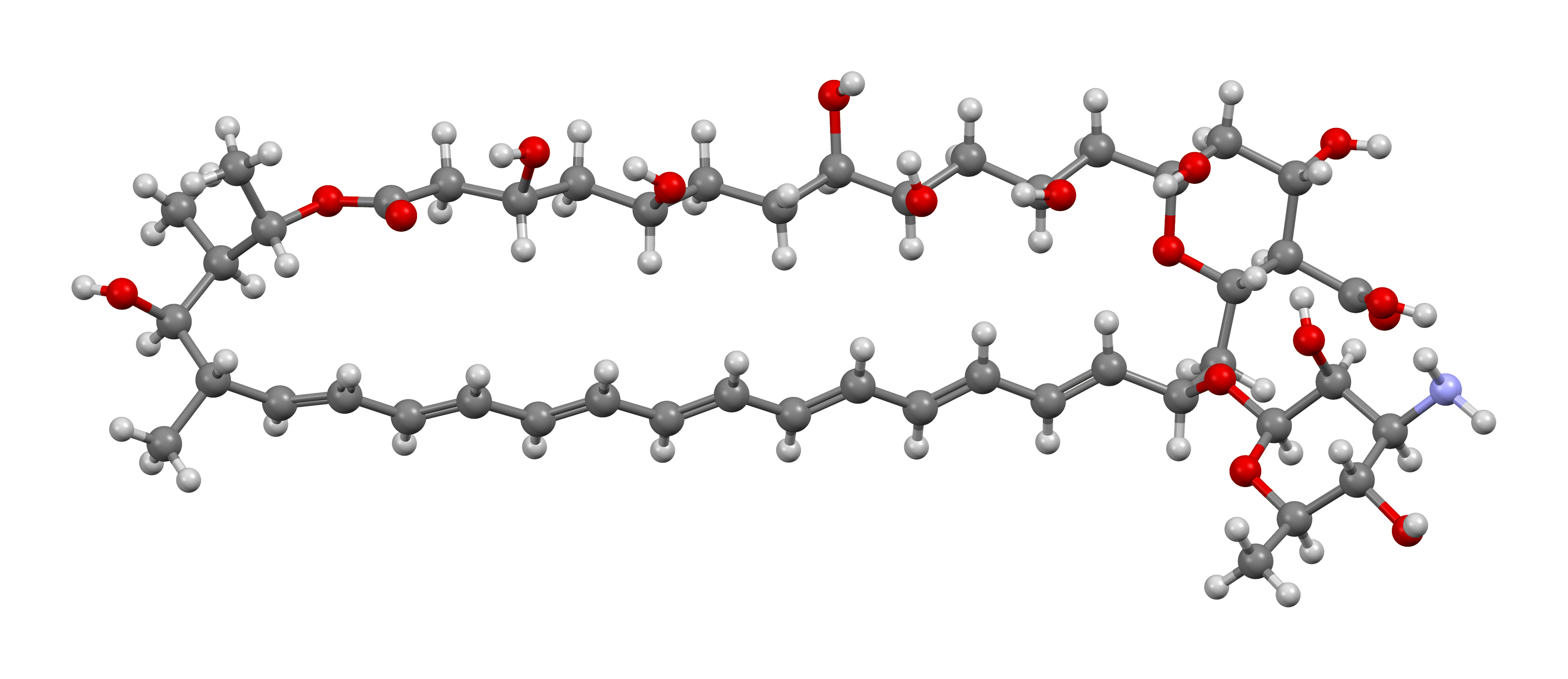| drug name | Amphotericin B |
| classification | Polyene antifungal agent |
| pharmacokinetics | | absorption | Poorly absorbed orally; administered intravenously. | | distribution | Relatively poor tissue penetration, except for fungal sites; accumulates in kidneys, liver, lungs. | | metabolism | Minimal metabolism; primarily excreted unchanged. | | elimination | Primarily by renal excretion. Significant accumulation in kidney tubular cells can occur. |
|
| suggested dosage | | note | Dosage must be individualized by a healthcare professional. | | typical | 0.25-1.0 mg/kg/day IV, generally given in multiple infusions over 2-6 hours. Higher doses may be used in severe infections. | | weight specific | 70 kg patient = 17.5-70 mg/day IV. Important to monitor renal function during treatment. | | frequency | Treatment typically given in daily or every other day infusions. |
|
| indications | | 1 | Life-threatening systemic fungal infections (e.g., invasive aspergillosis, candidiasis, cryptococcosis). | | 2 | Treatment of systemic fungal infections that are refractory to other antifungal agents. |
|
| safety pregnancy | Use only if potential benefit outweighs potential risks. Animal studies show adverse effects; human data limited, so potential fetal harm cannot be definitively ruled out. |
| safety breastfeeding | Not recommended during breastfeeding due to the possibility of drug passage into breast milk. Monitor infant for adverse reactions. |
| side effects | | 1 | | type | common | | description | Fever, chills, rigors, nausea, vomiting, headache, hypotension, anorexia, myalgia, phlebitis at the infusion site, renal impairment |
| | 2 | | type | serious | | description | Nephrotoxicity (kidney damage), electrolyte abnormalities (hypokalemia, hypomagnesemia, hypocalcemia), thrombophlebitis, infusion-related reactions (hypotension, fever, chills), anemia, neutropenia, thrombocytopenia. |
|
|
| alternatives | |
| contraindications | | 1 | Known hypersensitivity to amphotericin B or other polyenes | | 2 | Severe renal impairment |
|
| interactions | | 1 | Concurrent use of nephrotoxic medications can increase risk of renal failure | | 2 | May enhance the effects of other drugs that are excreted by the kidney |
|
| warnings precautions | | 1 | Monitor renal function closely throughout therapy. Consider preemptive supportive measures, such as hydration and electrolyte replacement, to mitigate potential adverse effects. | | 2 | Infusion-related reactions can be severe, so careful monitoring is required. | | 3 | Adjust dosage based on patient's renal function and clinical response. |
|
| additional information | | administration notes | Administered intravenously over a period of 2–6 hours. Medications administered with amphotericin B (such as antipyretics) can help prevent fever and chills. | | monitoring guidelines | Monitor vital signs, electrolytes, renal function tests, and complete blood counts frequently | | patient education | Advise patients of potential side effects, including those related to renal function and electrolyte disturbances. |
|
